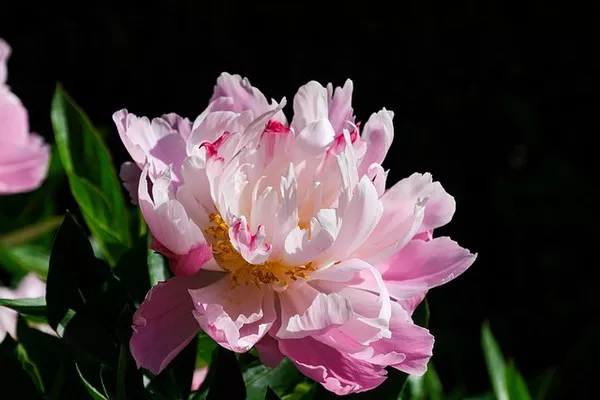In the realm of ornamental flora, few blossoms captivate the imagination quite like the peony. Known for their opulent beauty and rich symbolism, peonies are perennial favorites in gardens around the world. In this article, we delve into the intricate details of what makes peony flowers so extraordinary, exploring their appearance, varieties, and the cultural significance they hold.
Botanical Anatomy
The peony, scientifically known as Paeonia, is a flowering plant that belongs to the Paeoniaceae family. Comprising about 33 species, peonies manifest in a variety of colors, shapes, and sizes. The most common characteristics that define these stunning blooms include their large, lush petals, vibrant colors, and a fragrance that ranges from delicate to intoxicating.
Peony flowers exhibit a distinctive cup-shaped form, with layers of petals arranged symmetrically around a central cluster of stamens. The petals can vary in shape, from the classic rounded form to more elongated or fringed varieties. The most notable feature of peony blooms is the lushness of their petals, which gives them a voluminous and luxurious appearance.
Color Palette
Peonies flaunt a diverse and striking color palette, making them a versatile choice for floral arrangements and garden design. While the most common hues include shades of pink, ranging from pale blush to deep magenta, peonies can also be found in white, red, coral, and even yellow. Some varieties even exhibit a captivating blend of colors, adding an extra layer of allure to these botanical marvels.
Beyond their vibrant shades, the texture of peony petals is often velvety or satiny, contributing to the overall visual and tactile appeal of the flowers. The combination of their large size, lush petals, and captivating colors makes peonies stand out as one of the most visually enchanting blooms in the plant kingdom.
Varieties of Peonies
The world of peonies is as diverse as it is beautiful, with a multitude of varieties that cater to different tastes and preferences. Broadly categorized into herbaceous and tree peonies, each type offers a unique charm.
Herbaceous Peonies: These are the most common type of peonies and are known for their robust, bush-like growth. Herbaceous peonies die back to the ground during the winter and re-emerge in spring. They come in a range of colors and are often prized for their exquisite fragrance. Popular cultivars include the Sarah Bernhardt, Karl Rosenfield, and Bowl of Beauty.
Tree Peonies: Unlike their herbaceous counterparts, tree peonies have woody stems that do not die back in winter. These peonies often boast larger, more intricate blooms, with a tree-like growth habit. Tree peonies are available in an array of colors and are appreciated for their longevity and architectural presence. Examples of tree peony cultivars include High Noon, Rockii hybrids, and Shimadaijin.
Intersectional (Itoh) Peonies: These hybrids combine the best features of herbaceous and tree peonies, showcasing the vibrant colors and large blooms of the former, along with the sturdy, upright growth habit of the latter. Intersectional peonies, often referred to as Itoh peonies, are relatively new to the peony scene but have quickly gained popularity for their unique combination of traits. Notable varieties include Bartzella, Hillary, and Julia Rose.
Cultural Significance
Peonies have held symbolic importance in various cultures throughout history. In Chinese culture, the peony is known as the “king of flowers” and symbolizes prosperity, wealth, and honor. The flower is often featured in art, literature, and traditional Chinese medicine. Similarly, in Japanese culture, peonies are associated with good fortune and are celebrated during the Hanami festival.
In Western cultures, peonies are a traditional floral symbol of romance, love, and beauty. They are frequently chosen for bridal bouquets, symbolizing a happy and prosperous marriage. Additionally, the peony is the traditional flower for the 12th wedding anniversary, representing the endurance and longevity of a loving relationship.
See Also What Flowers Don T Attract Bees
Conclusion
In the realm of botanical beauty, peony flowers emerge as timeless treasures that captivate with their opulence, variety, and cultural significance. Whether adorning gardens, weddings, or artistic creations, peonies stand as living works of art, inspiring awe with their lush petals and vibrant hues. As we continue to appreciate the diverse world of flora, the peony remains a symbol of natural elegance, inviting us to revel in the enchanting splendor of these exquisite blooms.


